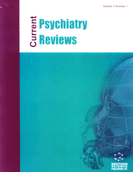Abstract
Idiopathic unconjugated hyperbilirubinemia (Gilberts syndrome, GS) is a relatively common congenital hyperbilirubinemia occurring in 3-7% of the world population. It has been recognized as a benign familial condition in which hyperbilirubinemia occurs in the absence of structural liver disease or hemolysis, and the plasma concentration of conjugated bilirubin is normal. Recently, it was reported that unconjugated bilirubin had neurotoxicity in the developing nervous system. The ‘neurodevelopmental hypothesis’ of schizophrenia was proposes that a yet-unidentified event occurring in utero or early postnatal life. We have observed that patients suffering from schizophrenia frequently present an increased bilirubin plasma concentration when admitted to the hospital. Therefore, we had notice the relation between unconjugated bilirubin and the etiology and vulnerability of schizophrenia.
Keywords: schizophrenia, hyperbilirubinemia, gilberts syndrome, clinical feature, computed tomography (ct), magnetic resonance image (mri), proton magnetic resonance spectroscopy (h-mrs)
 2
2



